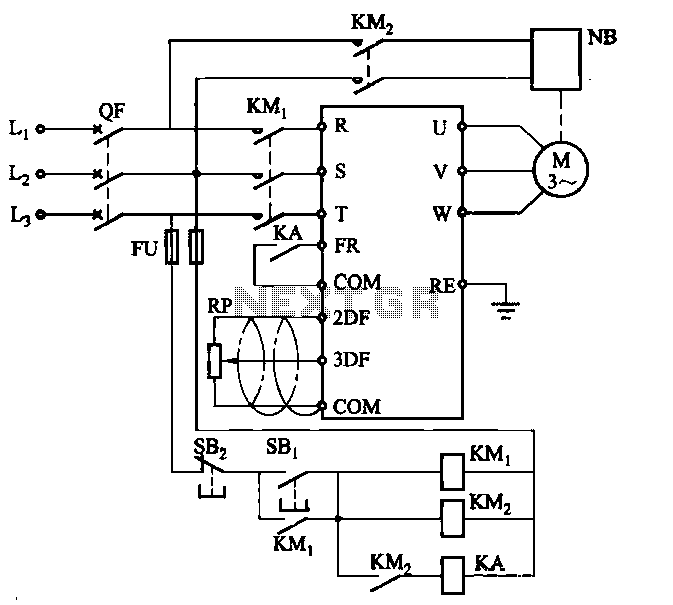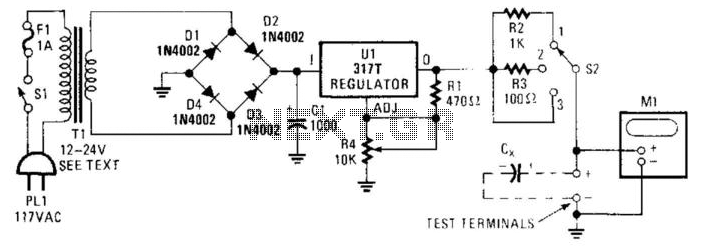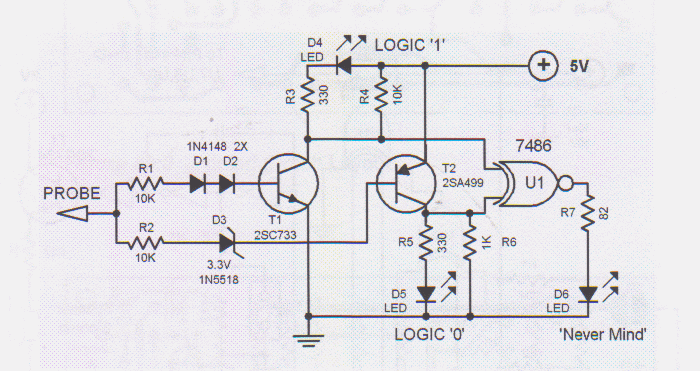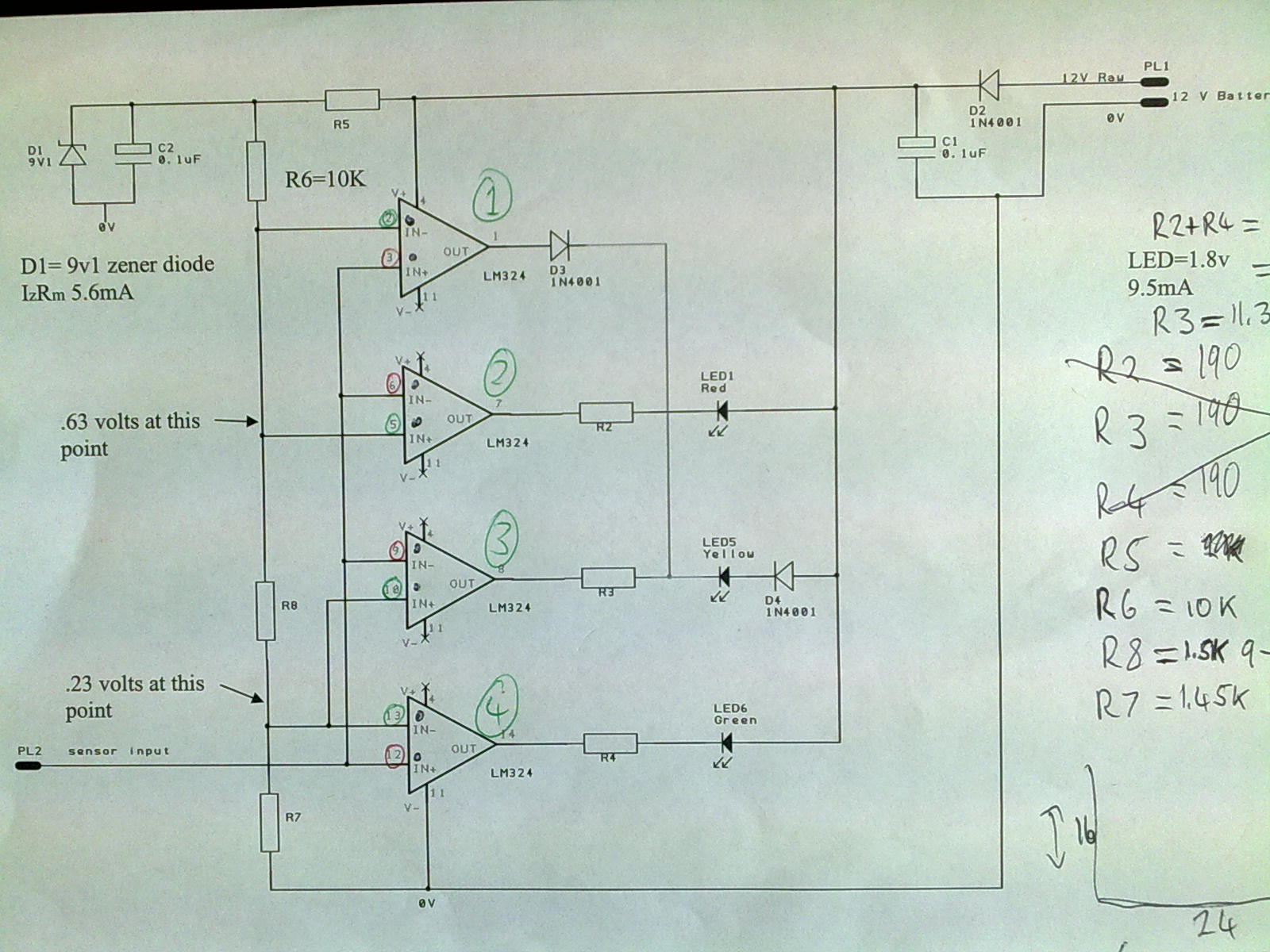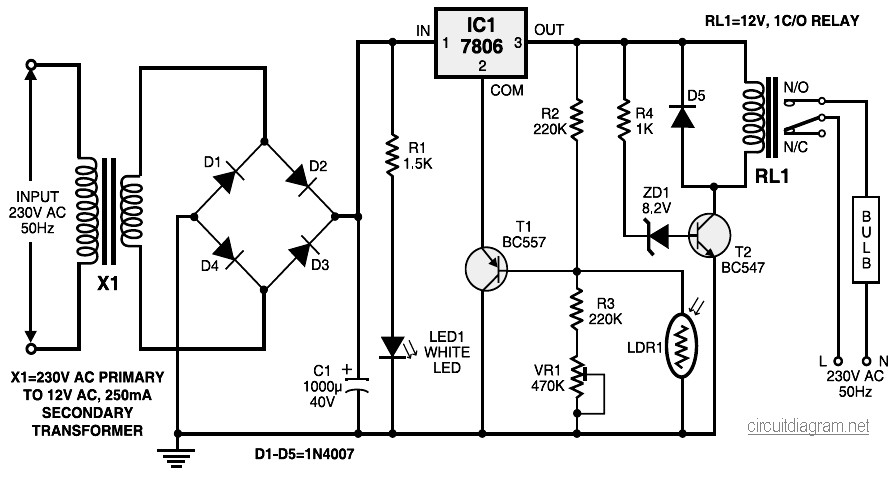
CH217 monolithic gas gas gas detection alarm integrated circuits the circuit diagram of gas detection alarm
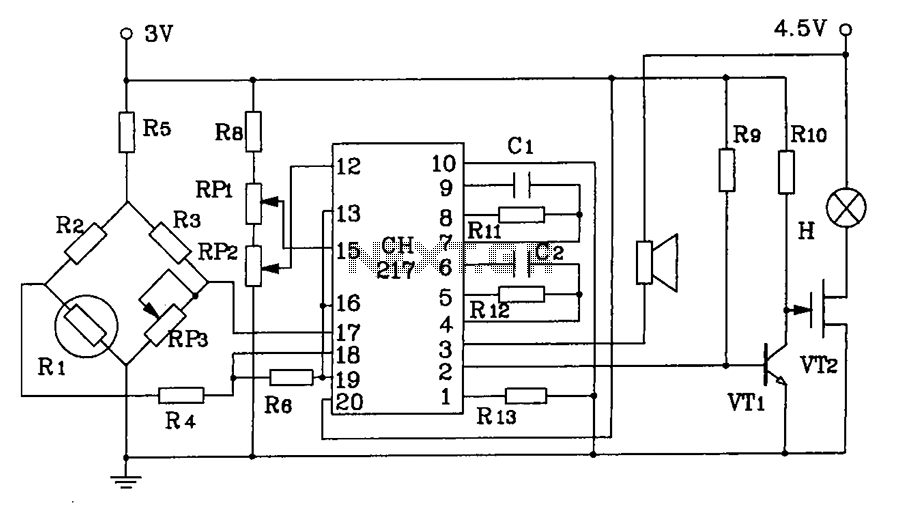
CH217 is a monolithic gas detection alarm integrated circuit. The gas detection alarm circuit diagram includes R1 as the gas sensing probe, where the resistance increases as the gas concentration decreases linearly. RP3 is used to adjust the output level of the amplifier, while R6 and R7 extract two types of danger forecast reference signal voltages.
The CH217 integrated circuit is designed for gas detection applications, providing a reliable and efficient solution for monitoring gas levels in various environments. The primary component, R1, functions as the gas sensing probe. This probe exhibits a unique characteristic where its resistance changes inversely with the concentration of the target gas; as gas concentration decreases, the resistance of R1 increases linearly. This behavior is critical for accurate gas detection and monitoring.
The circuit employs RP3, a potentiometer, to fine-tune the output level of the amplifier, ensuring that the signal can be adjusted to meet specific application requirements. This feature allows for flexibility in the circuit's operation, accommodating different gas types and concentrations.
Additionally, resistors R6 and R7 are incorporated into the circuit to extract two distinct danger forecast reference signal voltages. These reference voltages are essential for determining the threshold levels at which the gas detection alarm will activate. By monitoring these voltage levels, the circuit can effectively signal when gas concentrations reach potentially hazardous levels, ensuring timely alerts and safety measures.
Overall, the CH217 gas detection alarm circuit is a sophisticated and adaptable solution for gas monitoring, leveraging the properties of its components to provide accurate readings and reliable warnings in gas detection scenarios. CH217 monolithic gas, gas gas detection alarm integrated circuits, and gas detection alarm circuit diagram R1 is the gas sensing probe, the resistance increases just gas concen tration decreases linearly, RP3 used to adjust the output level of the amplifier, R6, R7 extract and two kinds of danger forecast reference signal voltage.
The CH217 integrated circuit is designed for gas detection applications, providing a reliable and efficient solution for monitoring gas levels in various environments. The primary component, R1, functions as the gas sensing probe. This probe exhibits a unique characteristic where its resistance changes inversely with the concentration of the target gas; as gas concentration decreases, the resistance of R1 increases linearly. This behavior is critical for accurate gas detection and monitoring.
The circuit employs RP3, a potentiometer, to fine-tune the output level of the amplifier, ensuring that the signal can be adjusted to meet specific application requirements. This feature allows for flexibility in the circuit's operation, accommodating different gas types and concentrations.
Additionally, resistors R6 and R7 are incorporated into the circuit to extract two distinct danger forecast reference signal voltages. These reference voltages are essential for determining the threshold levels at which the gas detection alarm will activate. By monitoring these voltage levels, the circuit can effectively signal when gas concentrations reach potentially hazardous levels, ensuring timely alerts and safety measures.
Overall, the CH217 gas detection alarm circuit is a sophisticated and adaptable solution for gas monitoring, leveraging the properties of its components to provide accurate readings and reliable warnings in gas detection scenarios. CH217 monolithic gas, gas gas detection alarm integrated circuits, and gas detection alarm circuit diagram R1 is the gas sensing probe, the resistance increases just gas concen tration decreases linearly, RP3 used to adjust the output level of the amplifier, R6, R7 extract and two kinds of danger forecast reference signal voltage.
